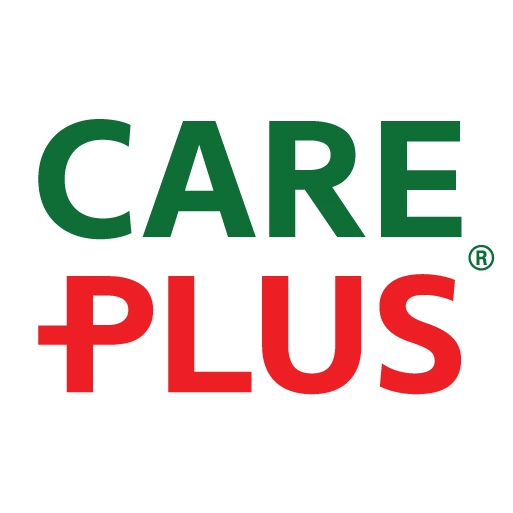Lotion and Lip Balm
Sunlight stimulates blood circulation and plays an important role in the synthesis of vitamin D, which the body requires for the production of calcium for bones. Sunlight also contributes to our well-being and vitality. Care Plus® offers a product line that allows you to enjoy the sun without worry. Our sun protection products fall under the high protection category: SPF 30 and 50. Not only do they protect from UV-B radiation, but also from UV-A radiation.
Sunlight is made up of UV-A, B and C rays, each with their own unique properties. UV-A rays damage the elastin in the skin. Long-term exposure to these rays can lead to allergic reactions, wrinkles, premature skin aging and, ultimately, skin cancer. UV-A radiation penetrates skin more deeply than UV-B rays. Exposure to too much UV-B radiation can cause reddening of the skin, sunburn, pigmentation, skin aging, thickening of the epidermis, and even different types of skin cancer. UV-B radiation is the most harmful in this respect. UV-C radiation is filtered by the atmosphere and does not penetrate into skin. We do not need to protect ourselves from UV-C radiation.
The Sun Protection Factor (SPF) indicates how many times longer a person can be exposed to the sun without burning when using the sunscreen compared to sun exposure without sunscreen. The UV-index indicates the strength of the sun’s ultraviolet radiation (UV) that reaches the earth at sea level. The amount of ultraviolet radiation is expressed in solar strength, an index that varies from zero (no UV radiation) to ten (maximum amount of ultraviolet sunlight). Why are these two concepts important? The combination of the daily UV index, your skin type and environmental conditions dictate how long you can be exposed to the sun without burning. You can then calculate how long you can be exposed to the sun without burning when using a sunscreen.
Sunscreen products should always be applied 30 minutes before exposure to the sun. If a sunscreen is used in combination with an insect repellent, the sunscreen should first be allowed to absorb into the skin for 20 minutes. The insect repellent can then be applied and allowed to dry for 10 minutes before sun exposure. When reapplying the sunscreen, it is advisable to first wash and dry the skin before repeating the above steps.
For good UV protection, it is very important to use the right quantity of sunscreen. All research conducted into the SPF of a cream uses the amount of 2 mg/cm2, applied evenly to skin. If less than this amount is applied, obviously the SPF will be lower. This means that applying half of this amount results in 1/4 of the protection factor stated on the packaging. SPF 28, in other words, will only be SPF 7.
A good standard is to use one teaspoon of cream for your entire face. Your face comprises 5% of your total body surface area. This means that you need two teaspoons for one arm or leg (each around 9% of total body surface area) and four teaspoons for the front and back of the average torso (each around 18% of total body surface area).

